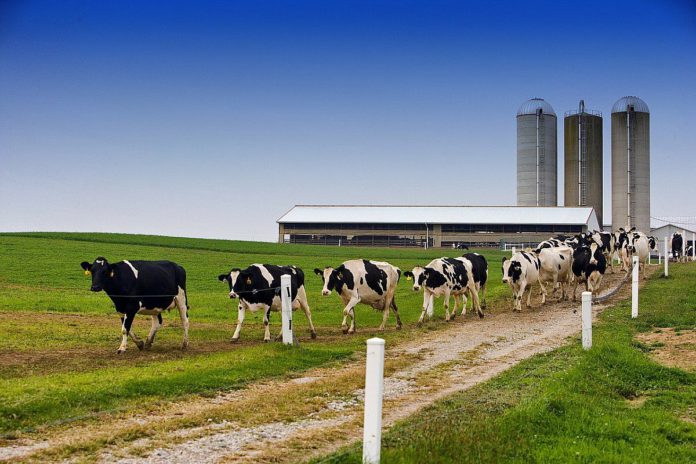Interest in the practice of Once A Day (OAD) milking continues to grow, according to Teagasc, who hosted a conference on Wednesday, January 15th at the Horse and Jockey Hotel, Thurles, County Tipperary.
The practice, the state agency outlined, is sometimes considered as an option in situations where labour is in short supply.
The farm layout means that cows have long walks to and from the parlour, or where reducing the number of milkings carried out is attractive from a lifestyle perspective.
Slow but steady uptake
Teagasc dairy advisor and organiser of the conference, Brian Hilliard said: “Interest and enquiries on milking cows once-a-day for the entire lactation continues to rise each year.”
“There is a slow but steady take-up of the system as more farmers get the courage to make the change or adopt it for the first time on non-dairy farms.” Hilliard added.
Preparation
Farmers considering OAD milking are encouraged to prepare well in advance before adopting the practice, by attending conferences, going to farm meetings on well-established OAD farms, and by contacting their Teagasc advisor.
UK Farmer Keith Davis was one of the keynote speakers at the conference.
He explained why he operates a-once a-day milking system on his farm: “We milk OAD because we quickly realised that milking cows was the most profitable enterprise for our farm, after we moved to a grazing based system.”
“So, by milking OAD, we could milk 1,000 cows using every hectare that is accessible to the dairy buildings, whilst still using our current 32-point rotary milking parlour.”
“To get labour today, it helps to be flexible and to be able to communicate.”
Millericks
Catherine and Liam Millerick said that they wanted to see if they could get 80-90% of their Twice A Day (TAD) income on OAD.
Once they researched that they could achieve 80-90% farm profitability, in line with the TAD herds, then it was a runner for them. They needed a new challenge after 34 years of milk quotas.
Going OAD for the Millericks was a choice that they made themselves; they did not jump into it because of quota restrictions, or long cow walks etc.
The benefits included improved lifestyle for themselves and for their cows, better stock health; it was more labour-friendly and had similar levels of profitability.
Breeding the suitable cow for OAD, while it took time, was also important to the success of the business.
Research programme
Michael O’Donovan and Emer Kennedy have recently started a new research programme on OAD milking in Teagasc Moorepark.
Emer Kennedy presented results from the first full year of the study which is set to continue for the next number of years.
The results showed that high performance can be achieved from OAD – almost 400 kg milk solids per year were produced by the OAD cows in year one of the study. These cows also had improved fertility and body condition score.
One of the key messages was that if a farmer is considering OAD milking, they need to have good grassland and herd management skills to minimise reductions in cow production performance.
OAD vs robotic milking system
In a comparison of TAD, robotics and once-a-day milking, Patrick Gowing, Teagasc dairy expansion advisor, emphasised that when comparing OAD against a robotic milking system, the milking process is less time consuming when robots are used, (40 minutes versus 2 hours), but it requires significant investment to achieve this.
“Therefore, OAD is a lower risk option, provided the drop in output is not too excessive, as it requires lower investment levels than a robotic system.” Teagasc said in a statement.





